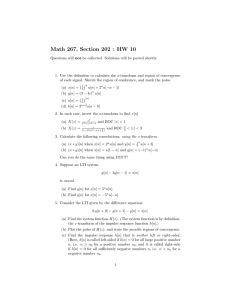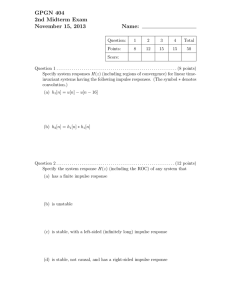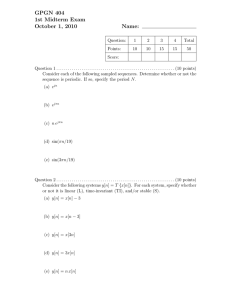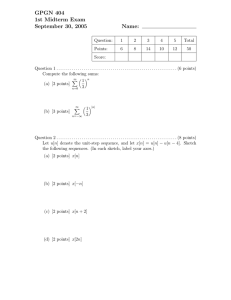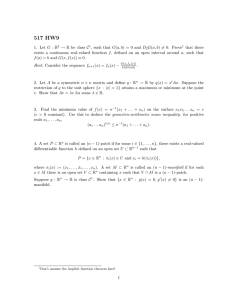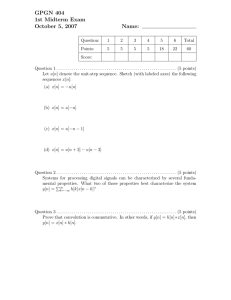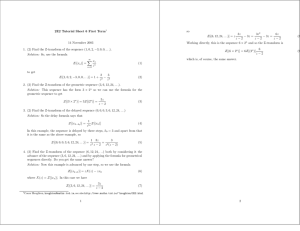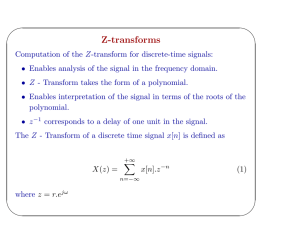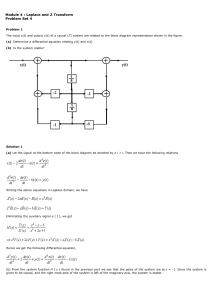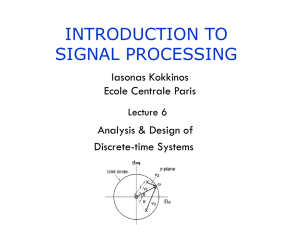GPGN 404 2nd Midterm Exam November 18, 2005 Name:
advertisement
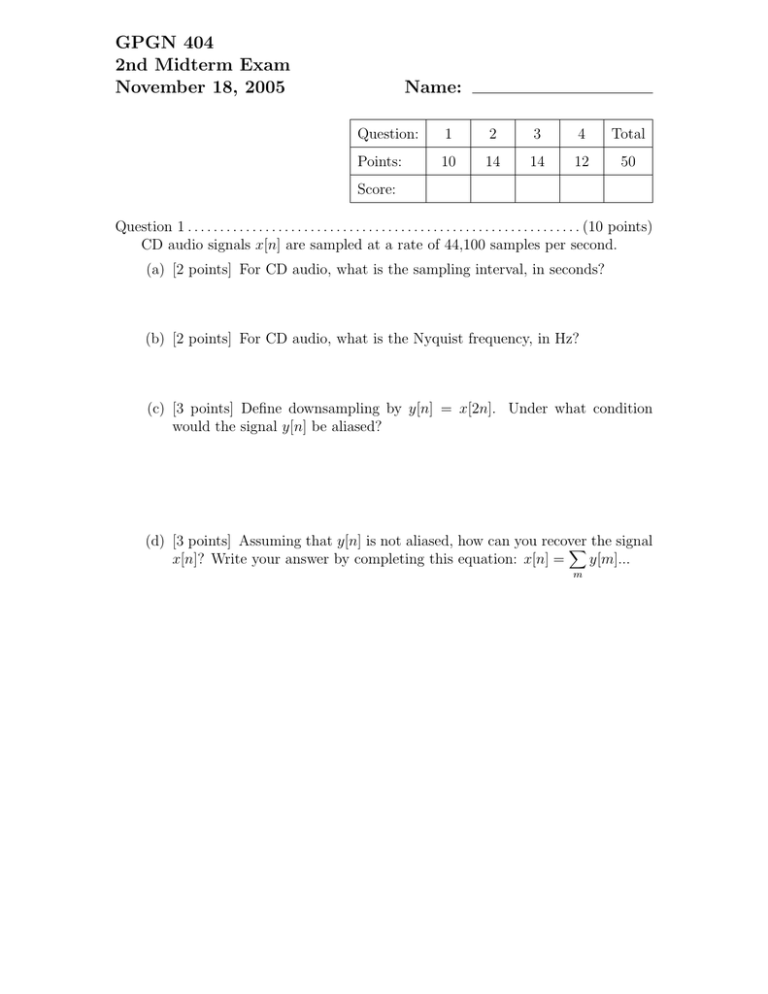
GPGN 404 2nd Midterm Exam November 18, 2005 Name: Question: 1 2 3 4 Total Points: 10 14 14 12 50 Score: Question 1 . . . . . . . . . . . . . . . . . . . . . . . . . . . . . . . . . . . . . . . . . . . . . . . . . . . . . . . . . . . . . (10 points) CD audio signals x[n] are sampled at a rate of 44,100 samples per second. (a) [2 points] For CD audio, what is the sampling interval, in seconds? (b) [2 points] For CD audio, what is the Nyquist frequency, in Hz? (c) [3 points] Define downsampling by y[n] = x[2n]. Under what condition would the signal y[n] be aliased? (d) [3 points] Assuming that y[n] is not aliased, how can you recover X the signal y[m]... x[n]? Write your answer by completing this equation: x[n] = m Question 2 . . . . . . . . . . . . . . . . . . . . . . . . . . . . . . . . . . . . . . . . . . . . . . . . . . . . . . . . . . . . . (14 points) Let h[n] denote a real-valued impulse response of an LTI system, and let H(ω), A(ω), and φ(ω) denote the corresponding frequency response, amplitude response, and phase response, respectively. (a) [2 points] For what frequencies ω is the frequency response H(ω) real-valued for any real-valued h[n]? (b) [2 points] Under what conditions on h[n] (in addition to being real-valued) is the frequency response H(ω) real-valued for all frequencies ω. (c) [2 points] If A(π/4) = 10, what is A(−π/4)? (d) [2 points] If A(π/4) = 10, what is A(9π/4)? (e) [2 points] If A(π/4) = 10, what is AdB (π/4)? (f) [2 points] If φ(π/4) = π/2, what is φ(−π/4)? (g) [2 points] If φ(π/4) = π/2, what is φ(9π/4)? Question 3 . . . . . . . . . . . . . . . . . . . . . . . . . . . . . . . . . . . . . . . . . . . . . . . . . . . . . . . . . . . . . (14 points) Let h[n] = δ[n + 2] − δ[n − 2] be the impulse response of an LTI system. (a) [2 points] Sketch this impulse response. (Label axes.) (b) [2 points] What is the Z-transform H(z) of this system? (Include the ROC!) (c) [2 points] Where in the complex Z-plane are the four poles of this system? (d) [2 points] Where in the complex Z-plane are the four zeros of this system? (e) [2 points] What is the frequency response H(ω) of this system? (f) [2 points] Sketch the amplitude response A(ω) of this system. (Label axes.) (g) [2 points] Sketch the phase response φ(ω) of this system. (Label axes.) Question 4 . . . . . . . . . . . . . . . . . . . . . . . . . . . . . . . . . . . . . . . . . . . . . . . . . . . . . . . . . . . . . (12 points) Let h[n] = (1/3)n u[n] − 2(1/3)n−1 u[n − 1] be the impulse response of an LTI system. Let x[n] = 2n u[−n − 1] denote the input to this system, and let y[n] denote the corresponding output. (a) [2 points] What is the Z-transform H(z) of this system? (Include the ROC!) (b) [2 points] Is the system stable? (Why or why not?) (c) [2 points] Is the system causal? (Why or why not?) (d) [2 points] What is the Z-transform X(z) of the input x[n]? (ROC!) (e) [2 points] What is the Z-transform Y (z) of the output y[n]? (ROC!) (f) [2 points] What is the system output y[n]?
